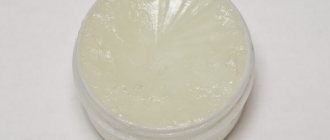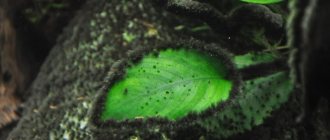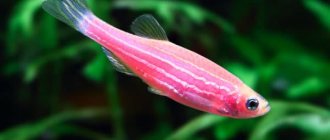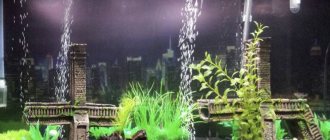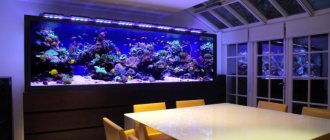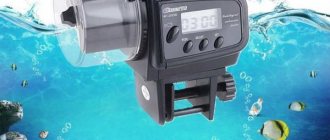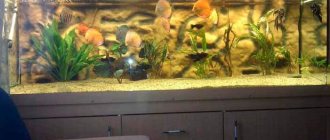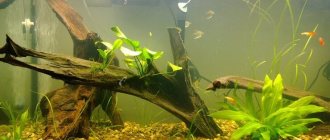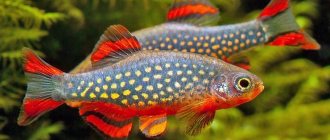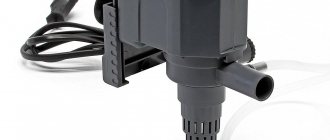Description of the drug
Methylene blue is a medicinal dye consisting of a dark green crystalline substance. The substance has bactericidal properties and is highly soluble in liquids, so it is used in various fields:
- For dyeing fabrics.
- In medicine for the treatment of certain ailments.
- In aquariums for treating fish and cleaning the aquatic environment.
Methylene blue is available in powder or crystalline form and is sold in pharmacies. For fish in aquarium keeping, an aqueous solution is used, which can be purchased at pet stores - the product is bottled in 50 ml bottles for ease of use.
Methylene blue is often used by aquarists to purify water and treat fish, since the drug allows you to quickly and effectively destroy parasites. However, in order not to harm your pets, you should know how to properly use blue aquarium conditioner.
Manufacturers recommend storing the product in a dark, dry place at temperatures up to 25C. It is important that children and pets do not have access to the storage area.
Purpose of blueing for an aquarium
Methylene blue aquarium water conditioner is widely used by aquatic enthusiasts for disinfection. It can be added to water to prevent diseases and treat aquariums before adding fish.
Before adding fish to an aquarium, it is recommended to disinfect it with a methylene blue solution.
All fish tolerate this product very well, so it can even be added to food. It is safe for aquatic life and is inexpensive. Methylene blue for aquarium has the following positive effects:
- improves the quality and structure of water;
- eliminates fungal infections of fish (branchiomycosis, dermatomycosis);
- treats unicellular parasites (ichthyophthirius, chilodonella);
- protects caviar from mycosis and other fungi;
- regulates and normalizes tissue respiration of fish;
- improves the development of eggs.
Many professional aquarists use methylene blue as a preventive measure when transplanting, transporting and introducing fish into a new aquarium. In this case, pets will experience less stress. The product is also convenient because it kills parasites and fungi not only in water, but also on animal scales, as well as in the oral cavity.
Methylene blue kills parasites and fungi in water, but also on fish scales
Indications for use and properties
The use of methylene blue in an aquarium allows aquarists to quickly and effectively disinfect the aquatic environment in the tank. The product can be added directly to the water to prevent disease and prepare the aquarium for new residents.
The undoubted advantage of the drug is that aquarium fish tolerate methylene blue well, since it is safe and sold at a favorable price. When used, the product has the following effects on the aquatic environment:
- Improves liquid quality.
- Eliminates fungal diseases.
- Cures against single-celled parasites.
- Promotes better development of caviar.
- Reduces stress in fish when moving to a new container.
Most experienced aquarists use methylene blue as a preventive measure when transporting and moving fish to a new tank to reduce stress in their wards. In addition, the drug also eliminates the possibility of pathogenic fungi and parasites entering the aquarium.
Blue in an aquarium is also used to treat such dangerous and common ailments as:
- Aeromonosis, or abdominal dropsy - with the development of this disease, pets become lethargic and inactive. Soon the fish lose their appetite, the victims constantly lie on the bottom, the tummy swells, and large red spots form on the body.
- Branchiomycosis, or gill rot - the disease can be recognized by the following symptoms: fish lose activity and appetite, scarlet and dark stripes form on the gills. With further development of the disease, necrosis of the gills occurs, as a result of which they become dark gray in color.
- Gyrodactylosis is a disease of parasitic origin, and is provoked by fluke parasites. With the development of gyrodactylosis, the appearance of the fish undergoes dramatic changes: white mucus appears on the body and hemorrhages on the fins. Pets behave restlessly and refuse to eat.
- Tetrachymenosis - like gyrodactylosis, the disease is caused by parasites. The disease can be eliminated by using methylene blue.
Methylene blue for aquarium and fish
Methylene Blue for Aquarium
Methylene blue is a synthetic dye. When dry, it looks like dark blue crystals, sometimes with a green tint. The course of treatment is until complete recovery. The dye is unstable to light, so it is advisable to carry out treatment with the aquarium lighting turned off.
Methylene blue has bactericidal and fungicidal properties. For the treatment of external bacterial and fungal infections, as well as some skin parasites such as ichthyophthyrus. Used for aeromonosis, branchiomycosis, gyrodactylosis, ichthyophthyriosis, costiosis, plistophoriosis, saprolegniosis, chylodonellosis, tetrachymenosis, trichodinosis, and partially affects ectoparasites.
So, let's now look in simple terms at what properties methylene blue has, how and why it is used.
Firstly , we advise you not to read reviews and burn the authors at the stake for the following statements: “In aquarium farming, blue conditioner (blue is trash =) is used as a powerful disinfectant. It is used to treat the aquarium before introducing fish to remove parasites, and also periodically add it to the water to prevent diseases.”
Table from the book by S. Spott The influence of therapeutic rates of dissolved antibiotics and medicinal drugs on nitrification in freshwater aquariums (Collins et al., 1975, 1976, Levine and Meade, 1976).
Methylene blue for aquarium table
As can be seen from the presented scientific studies, methylene blue completely kills the entire biological environment, both pathogenic and beneficial. Anyone, even a novice aquarist, knows that in the first month of an aquarium’s life, the biological balance and nitrogen cycle in the aquarium . By introducing methylene, supposedly to “remove parasites” and “prevent diseases,” irreparable damage is caused to beneficial colonies of nitrifying bacteria and other beneficial organisms. Please quarantine new fish in a separate container, not in a shared container. You should always remember that any drug has both positive and negative properties.
Secondly, let's understand in what cases it is worth using methylene blue. In general, the aquarium community believes that methylene blue is a good fungicidal (antifungal) drug with a mild effect. It is often recommended to be used in neristoviki - for processing caviar, which reduces damage to the masonry. However, as can be seen from the descriptive part of the article, methylene blue also has a bactericidal, anti-invasive (anti-parasitic) effect. Thus, methylene blue can be recommended in all cases of external infection of fish: wounds, abrasions; moss, cotton wool, fluff on the body; white spots, plaque; mucus on the body; bruises, pimples, boils, etc.
Note that due to such a wide spectrum of action, methylene blue is included in most branded complex medicines, for example, Tetra General Tonic .
Active ingredients, composition per 100 ml of solution: Ethacridine lactate - 836.0 mg.
Acriflavine - 160.2 mg. Methylene blue - 56.44 mg. 9-aminoacridine * HCI * H2O - 28.20 mg.
There is also pure methylene blue. Various aquarium manufacturers, including domestic ones, have similar mono-compositions. And here you need to understand the main thing that it is also a methylene in Africa, incl. take the most budget-friendly options (paying attention to the concentration of the active substance). For our part, we can recommend the most acceptable option from the domestic company VladOx (Medosa). Below we attach the official instructions for those who searched on the Internet for the procedure for using the medicine.
Methylene blue for VladOx Medos aquarium
VladOx METHYLENE BLUE conditioner is used to eliminate and prevent infections in aquariums of any type: decorative, nursery, spawning, etc. It is also used to prevent stress in fish by improving oxygen metabolism in fish tissues, preparing antibacterial food, protecting eggs and fry.
Safe for all types of fish, caviar, fry. It is recommended to use Malachite Green instead of VladOx for particularly sensitive fish.
Instructions and method of using methylene blue:
Before using VladOx METHYLENE BLUE conditioner, it is necessary to remove activated carbon and other chemical filtration media from the filter. You should also turn off the ultraviolet sterilizer if you are using it.
Methylene blue may negatively affect biofiltration. Therefore, during the operation of the air conditioner, it is recommended to increase the aeration of the aquarium, increase the frequency of water changes and reduce the amount of food. It is also recommended to use VladOx BIOBALANCE conditioner to protect aquarium inhabitants from ammonium and nitrite nitrogen.
VladOx METHYLENE BLUE conditioner is a strong dye and may stain some items in the aquarium. Staining is most noticeable on light-colored and porous surfaces such as natural stones and coral. Before using the conditioner, it is recommended to remove decorations from the aquarium that are most susceptible to staining.
When using conditioner to prevent and reduce stress, the recommended dosage is 5 ml per 20 liters of water. To combat pathogens of fungal diseases, 5 ml per 10 liters is used. It is recommended to shake the conditioner bottle vigorously before use. The required amount of conditioner should be dissolved in a small volume (200-300 ml) of clean water and poured into the aquarium in three doses at intervals of 20-30 minutes. For a more uniform distribution of the conditioner in the aquarium, it is recommended to pour the solution near the operating flow pumps or compressor sprayer. It is also recommended to use additional aeration for better mixing of water. When performing partial water changes in the aquarium, add an amount of conditioner that is equivalent to the volume of water being changed.
You can remove conditioner residues and get rid of water coloration using activated carbon and partial water changes. Active ingredients per 100 ml: methylene blue 600 mg.
Let's summarize. Methylene blue, as well as malachite green, is a basic drug that should always be in the aquarium first aid kit. And do not forget that treatment with any drug is possible only in “clean water” - without high concentrations of nitrogen compounds: NH4, NO2, NO3. By adding medicine to poisons, you can easily put fish, which already have zero immunity. Always test the water and remove excess nitrogen cycle products before treatment.
Methylene blue video review
Rotifer death from methylene blue
Subscribe to our YouTube channel so you don't miss anything
See also:
Metilenka forum
Treatment and diseases of aquarium fish
Our chicken got sick, temperature thirty-seven
Uninvited guests in the aquarium or identification of krakozyabry MEDICINES AND CONDITIONERS TETRA Leaves of oak, almond, alder cones in the aquarium Why fish die PUD SALT IN THE AQUARIUM Biomycin treatment for fish in the aquarium Bicillin for fish and aquarium Gentian violet Griseofulvin Dimetronidazole Kanamycin Collargol Competitor Malachite green Mar Dancer Masoten Mebendazole Metronidazole Neomycin Niclosamide Nitrofuran Oxytetracycline Oxolinic acid Basic violet K Parachlorophenoxytol Piperazine Rivanol Streptocide Sulfadimethoxine Sulfonamides SULPHATE Sodium thiosulfate Peat in the aquarium Trimethoprim Tripaflavin Trichlorfon Fenbendazole Phenoxyethanol Formalin Quinine Ciprofloxacin
Category: InfoCenter / Pharmacy products | 743 | Date: 10-04-2019, 14:34 | Comments (8)
We also recommend reading:
- — Rivanol (furacilin) for the treatment of aquarium fish
- — Copper sulfate for the treatment of aquarium fish
- — Tripaflavin for fish and aquarium
- — Metronidazole for the treatment of aquarium fish
- — Asphyxia of fish
Disadvantages of using methylene blue
Before using methylene blue to eliminate ailments and prevent it, it is important to familiarize yourself with the disadvantages of using the drug in an aquarium. They are expressed in the following points:
- Deterioration of the condition and development of plant flora.
- Painting the walls of the tank in blue shades if the container is made of plastic.
- Coloring the soil if the substrate is light in color.
- Painting decorative elements from a light shade to blue.
To avoid such phenomena, aquarists have come up with an excellent solution: they use methylene blue for baths without pouring the solution into a common tank. To cure a sick fish, it is placed in a prepared container with blue conditioner. If the treatment must be carried out in a general aquarium, then light-colored decorations should first be removed from the tank. After completing the course, clean the walls of the aquarium.
Disadvantages of the drug
The disadvantages of using methylene blue include the following: Negative effects on plants. Negatively affects the operation of the biofilter. The solution stains the walls of the aquarium, plants, soil and other decorative elements. Taking into account all the above disadvantages, it must be said that blue is today one of the most effective and safest means for treating fish. It is only recommended to carry out all operations with blue not in the main aquarium, but in a hygienic separate container
Instructions for use
To remove pathogenic parasites from the aquarium or carry out prevention, you need to add blue conditioner to the water at the rate of 1 drop/2.5 liters of liquid. You cannot drop the product directly into the water: the drug is first mixed in 100 ml of water, and then the prepared mixture is carefully poured into the aquarium in a thin stream. After a while, it is necessary to perform a partial water change and, if necessary, repeat the procedure, leaving the fish to swim in the aquarium with blue water for five days. After completion of treatment, the liquid in the reservoir is filtered through a carbon filter, or completely renewed.
If methylene blue is used for a marine aquarium, the following procedure must be followed:
- In a separate container, stir the blue solution at the rate of 1 ml/10 l of water.
- Patients in their care are removed from the common tank into a separate container with medicine.
- Treatment should last at least 3 hours, the procedure must be repeated every other day. The total number of treatments is 5.
To process and improve the development of eggs, experienced aquarists proceed as follows:
- The eggs are placed in a container with a blue solution for 2-3 hours.
- The dosage for preparing the solution is 1 ml/50 l of liquid.
The recommended dosage of the drug should be carefully observed, since if it is exceeded, there is a risk of killing the fish offspring.
Application Features Methylene Blue
The key to the effectiveness of using this drug is to determine the exact dosage that needs to be added to the aquarium. A 1% solution is used, so no more than 10 grams of blue must be dissolved in one liter of water. The resulting solution is added to the aquarium at the rate of 3 milliliters of solution per ten liters of volume. In pet stores you can find a ready-to-use solution that must be immediately added to the aquarium. A standard 50 ml bottle is enough for a 100 liter aquarium.
Therapeutic baths
Blue baths are good because they contain a high concentration of the drug, which makes it possible to eliminate diseases in a short time. The procedure is performed once for mildly affected fish, or twice with an interval of 2-3 days for a severe stage.
To prepare a therapeutic bath, settled water of a suitable temperature is poured into a separate container, after which the liquid is filled with oxygen using an aerator. Blue is added at the rate of 1.5 ml/1 liter of water, thoroughly stirring the product until the water turns blue. The length of time the fish stays in the bath is 30 minutes.
Release form
Methylene blue is presented in the form of crystals, after interaction with water they turn blue. The drug is also available in powder. It is no secret that aquarium fish require special and careful care, even though they are calm creatures. You will need to purchase special food, regulate the normal water temperature, and create access to oxygen. High-quality lighting is also necessary. Water is of primary importance. If it is dirty for a long time, the fish will not survive. Methylene blue is just needed to clean the liquid.
Precautionary measures
Methylene blue is a medicinal product, so when working with it you must follow safety precautions:
- Wear rubber gloves and avoid contact of the solution with bare skin and mucous membranes.
- It is prohibited to ingest the solution, smoke or eat during the procedures.
- After completing the treatment, the containers in which the solution was located are thoroughly washed.
- Empty bluing containers are disposed of.
Important information: blue should not be used in aquariums where large amounts of nitrogen compounds are present.
Methylene blue is an excellent and effective remedy that allows aquarists to properly care for their fish and promptly eliminate dangerous diseases. When using the product, it is important to adhere to the instructions for use and follow the recommended dosage.
Composition and scope
Methylene blue is a synthetic thiazine dye. The drug consists of dark blue crystals that dissolve well in aquarium water. Due to its fungicidal and bactericidal properties, methylene blue solution is widely used for:
- Treatment of fungal diseases - branchiomycosis and dermatomycosis (gill rot).
- Normalization of the process of incubation of eggs, as well as prevention of mycoses of eggs.
- Treatment of fish diseases caused by protozoan parasites - chillodonella, ichthyophthirius, costia, etc.
- Prevention of stress and normalization of breathing, possible during transportation or transplantation of fish from an aquarium.
- Treatment of blood diseases due to fish poisoning with nitrates or cyanides.
